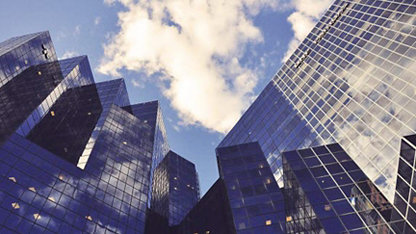The regions with the greatest infrastructure investment needs are Asia and the Americas. Sakshi Sharma explores a world of surveying opportunities.
The McKinsey 2017 report Bridging Infrastructure Gaps states that the world spent $2.5tr, or 14% of global GDP, on economic infrastructure such as transport, power, water and telecoms in 2015.
But huge as this number is, it’s not enough: $3.7tr is required every year to 2035 – and to meet the UN’s sustainable development goals, this could increase by up to $1tr annually.
However, perhaps the most compelling issue with the world infrastructure gap is not its size, but how it plays out across the globe. Asia, hungry for railways, roads and power stations, predictably dominates global demand, accounting for 54% of the global picture, while the Americas represents 22%.
But the difference in how successful these two regions have been in attracting or allocating the investment needed is striking: Asia’s infrastructure gap stands at 10%, while the Americas’ is significantly higher at 47%.
America's creaking infrastructure
A primary reason for this is the US’s ageing and poorly maintained infrastructure. The American Society of Civil Engineers (ASCE) produces an infrastructure “report card” every four years, which assesses how each sector has fared over the period: in 2017, most sectors scored a “D” grade, except rail, which scored “B”.
Infrastructure veteran Joseph Aiello, a former partner and now senior fellow at infrastructure investment company Meridiam, says it has been very clear over the past 15 years that the “US federal government is reluctant to step in and raise funds for infrastructure investment.”
Aiello continues: “The federal government is unlikely to spend a large chunk on infrastructure as it is already dealing with a large deficit and needs to manage social security, medical care, etc.”
Another factor is that much of the infrastructure fundraising happening in the US takes place at state and local level, through an increase in petrol taxes and other regional funding sources. “The US is a more fractured market, as a lot takes place at the regional agency level,” says Aiello. “The federal government has a limited voice in what is built locally. There are a lot of local agencies, like transit or port authorities, which also means it can take a long time to get a project approved.”
Growth in Asia
Meanwhile, in Asia, many of the biggest markets are comparatively successful in allocating and attracting investment. China is expected to spend $26tr on infrastructure in the years up to 2040, against a requirement of $28tr. India’s gap is $526bn against a 2040 target of $4.5tr, while Japan’s shortfall against the target for the same year of $3.8tr is a mere $91bn, according to Global Infrastructure Hub data.
“Across Asia, the ASEAN countries present the biggest challenge and a huge need for infrastructure. They have massive populations and are at different stages of economic development. Large-scale infrastructure development is essential to improve connectivity, support continued economic growth, and generate improvements in living standards,” says Julian Vella, partner and Asia-Pacific regional leader for global infrastructure at KPMG in Hong Kong.
“There has to be greater collaboration between the government and private sector for the gap to be closed. There is unquestionably a need for more private capital in the construction, financing, and operation of infrastructure.”
Julian Vella, KPMG
Hong Kong
“There has to be greater collaboration between the government and private sector for the gap to be closed. There is unquestionably a need for more private capital in the construction, financing, and operation of infrastructure,” Vella continues. “It is important for governments to understand what is required, and to create the conditions to attract that investment. There is plenty of capital seeking to invest in the infrastructure sector, but the owners of that capital will only seek to invest in markets and projects which will generate acceptable returns for the associated risks.”
The cost of repairing and maintaining infrastructure itself will present a massive challenge to governments such as the US in the coming years, and only widen the investment gap further. The report, Between A Budget And A Hard Place: The Risks Of Deferring Maintenance For US Infrastructure, by Standard & Poor’s, highlighted this in May 2018, alerting of the costs of deferred maintenance, and how this could hurt state and local government budgets.
Global public-private partnerships
During the first half of 2018, $43.5bn was invested by the private sector in 164 infrastructure projects across 34 countries. The top five countries – China, Turkey, Vietnam, India and Brazil – accounted for 66% of the total.
- China $11.6bn
- Turkey $7.2bn
- India $3.8bn
- Vietnam $3.4bn
- Brazil $3bn
Source: World Bank, 2018
Due in part to the lack of a standardised reporting methodology, the ratings agency commented, it can be extremely hard for prospective investors to quantify maintenance backlogs. Better defined and more transparent disclosure would allow credit rating agencies and municipal bond investors to have more visibility into the relative ranking of state and local governments’ deferred maintenance levels.
On the other hand, Asia’s need for greenfield infrastructure requires a significant amount of capital, and investor confidence. “The main challenge [in funding] is that the markets carry a relatively high level of institutional risk, so investors tend to look very carefully before they invest here,” says Vella. He points to the fact that investing risks are high in many Asian countries due to relatively weak institutional frameworks. In turn, these create significant risk in key areas such as contractual enforcement, dispute resolution, regulatory uncertainty, financing or currency risks and lack of procurement transparency. This is combined with the next level of risk at project level: are the right ones being selected, have they been subjected to financial feasibility, and are they being structured well.
Whether projects are being de-risked, and is the procurement process fair, transparent and easy for international investors to participate in, are all questions investors have to deal with when deciding to invest in any project.
“There is a huge volume of capital earmarked by the institutional investor community for infrastructure which is waiting to be invested in real assets.”
Martin Haran
Built Environment Research Institute, Ulster University
The role of banks
Although the role of development banks in Asian infrastructure projects is quite prominent, the cost of capital remains relatively high thanks to the underlying political risk. Vella believes that investors view most emerging markets as high risk due to regulatory uncertainty, weak institutional capacity, lack of procurement transparency, and inadequate project prioritisation and preparation.
This is also the case with countries within the Latin American region, where infrastructure investment is hurt by market and projects risk, as well as non-standardised infrastructure procurement practices. Steve DeWitt, a senior vice-president of business development at global construction company ACS, who has also spent over three decades in the US public sector, says: “The infrastructure issues across the US and, I imagine, across the Americas in general, are very likely the same – wherein there has never been near enough money for infrastructure, either for new construction or for asset maintenance.”
This is true regardless of whether these assets are in urban or rural areas, DeWitt comments. However, in urbanised areas, no matter which asset class they belong to, the costs of maintaining and repairing these assets are well beyond current funding streams.
“The key thing is that there isn’t necessarily a financing gap,” says Martin Haran, professor of real estate and urban studies at Ulster University’s Built Environment Research Institute in Northern Ireland. “There is a huge volume of capital earmarked by institutional investor community for infrastructure which is [waiting] to be invested in real assets.”
Progression among equity investors
Over the past few years, there’s been significant progression from large equity investors. Blackstone Infrastructure announced a $40bn infrastructure fund, while Global Infrastructure Partners and Brookfield Infrastructure Partners raised $15.8bn in 2016 – no doubt all these investors will be seeking investment-worthy assets in the coming years. “A lot of those funds are struggling to invest, as there isn’t a visible project pipeline. The gap hasn’t been translated into actual investable projects on the ground,” Haran comments.
“Two things need to be done better,” comments Vella. “The first is for countries to work on developing their institutional framework to reduce risks. The problem is that, in many markets, these investments are not adequately compensated through higher returns, so markets need to be de-risked.” He continues: “The other thing they need to do is spend more money on experienced consultants to help undertake more rigorous project feasibility, project risk assessment, and to structure projects to make them commercially viable and more appealing to investors.”
Governments can also embark on further actions to help, states Vella. “Other interventions to mitigate specific project risks, including the establishment of funds such as the Indonesian Infrastructure Guarantee Fund, should also be considered in other markets.” Nations need to take these steps to improve their international competitiveness and business environments.
Although the specific needs and methods may notably differ between the two regions, the future paths for both require serious consideration on how to optimise and prioritise investment. As populations continue to grow and the subsequent strain on existing infrastructure increases, it’s vital for governments and organisations to tackle the matter head on and confront the challenges posed, before their effects become critically detrimental.
- Sakshi Sharma is a journalist who specialises in infrastructure and energy finance across the Americas.
This article originally appeared in The Cash Issue of Modus (March 2019), titled A Bridge Too Far.

















